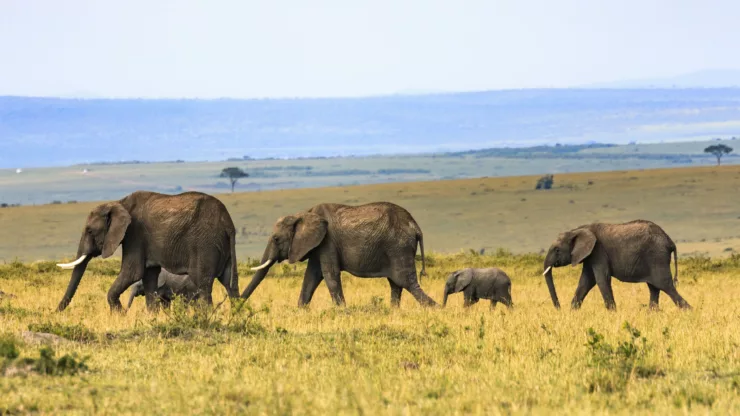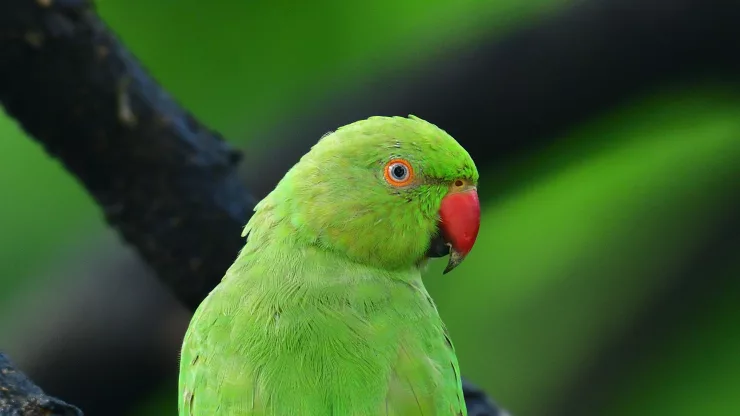As cities continue to grow and expand, urban wildlife is becoming more prevalent in many metropolitan areas.
From coyotes to raccoons, birds to squirrels, these animals have adapted to living in urban environments and provide unique opportunities for tourists to experience nature in the midst of bustling cities.
However, it is essential to balance tourism with wildlife conservation to ensure that these animals can continue to thrive in their urban habitats.
Jump to Section
Introduction
Defining Urban Wildlife
Urban wildlife refers to animal species that live and thrive in urbanized areas.
These animals have adapted to living in cities and can be found in parks, residential areas, and even busy streets.
Importance of Sustainable Tourism in Cities
Sustainable tourism is an essential component of urban development as it can provide economic benefits while also protecting the environment and promoting social responsibility.
By focusing on sustainable tourism practices, cities can create opportunities for tourists to experience nature while also preserving urban wildlife habitats.
Urban Wildlife in Cities
Biodiversity in Urban Areas
Contrary to popular belief, urban areas can support a wide range of biodiversity.
Green spaces such as parks, gardens, and even building rooftops can provide habitats for various animal species.
The presence of urban wildlife can also promote biodiversity by helping to pollinate plants and control pest populations.
Common Urban Wildlife Species
Some of the most common urban wildlife species include birds such as pigeons and sparrows, small mammals like squirrels and raccoons, and reptiles such as lizards and snakes.
However, as cities continue to expand, larger animals like coyotes and deer are also becoming more common in urban areas.
Human-Wildlife Conflicts in Cities
As urban wildlife populations grow, conflicts between humans and animals can arise. These conflicts can range from property damage to safety concerns.
However, by implementing sustainable tourism practices, cities can minimize these conflicts while also promoting the coexistence of humans and wildlife.
Sustainable Tourism and Urban Wildlife
Benefits of Sustainable Tourism for Urban Wildlife
Sustainable tourism practices can help minimize the impact of tourism on urban wildlife habitats.
By promoting responsible tourism practices, cities can reduce the disturbance of wildlife and minimize habitat destruction.
Best Practices for Sustainable Tourism in Urban Areas
To promote sustainable tourism in urban areas, cities can implement various practices, such as limiting the number of visitors in sensitive areas, providing education to tourists about responsible wildlife viewing, and promoting eco-friendly transportation options.
Examples of Sustainable Tourism Initiatives in Cities
Cities around the world are implementing sustainable tourism initiatives to promote responsible tourism practices.
For example, in Melbourne, Australia, the city has established a wildlife-friendly tourism program that provides visitors with information about wildlife habitats and how to minimize their impact on these habitats.
Exploring Urban Wildlife
Nature-Based Tourism Activities in Cities
Cities offer a wide range of nature-based tourism activities, including bird watching, hiking, and wildlife photography. These activities provide opportunities for tourists to experience nature while also supporting local economies.
Urban Wildlife Watching Opportunities
Urban areas offer unique opportunities to observe wildlife in their natural habitats.
From bird watching in Central Park to coyote spotting in Los Angeles, tourists can experience the thrill of urban wildlife watching while also promoting wildlife conservation.
Tips for Responsible Wildlife Watching in Urban Areas
When observing urban wildlife, it is essential to do so responsibly.
Tourists should always follow local regulations and avoid disturbing wildlife, keep a safe distance, and avoid feeding animals.
Challenges and Solutions
Challenges of Managing Urban Wildlife in Tourist Areas
Managing urban wildlife in tourist areas can be challenging, as the presence of tourists can disturb wildlife and disrupt habitats.
It is essential to implement sustainable tourism practices and educate tourists about responsible wildlife viewing to minimize the impact on urban wildlife.
Solutions for Balancing Tourism and Wildlife Conservation
To balance tourism and wildlife conservation in urban areas, cities can implement various solutions, such as creating designated wildlife viewing areas, providing education to tourists about responsible wildlife viewing, and promoting eco-friendly transportation options.
Conclusion
Supporting Urban Wildlife Conservation through Sustainable Tourism
Urban wildlife provides a unique opportunity for tourists to experience nature in the midst of bustling cities.
By promoting sustainable tourism practices, cities can support urban wildlife conservation while also providing economic benefits to local communities.
FAQ
What are some common urban wildlife species?
Some common urban wildlife species include birds such as pigeons and sparrows, small mammals like squirrels and raccoons, and reptiles such as lizards and snakes.
How can tourists promote wildlife conservation in urban areas?
Tourists can promote wildlife conservation in urban areas by following local regulations, avoiding disturbing wildlife, keeping a safe distance, and avoiding feeding animals.
What are some sustainable tourism practices that cities can implement?
Cities can implement various sustainable tourism practices, such as limiting the number of visitors in sensitive areas, providing education to tourists about responsible wildlife viewing, and promoting eco-friendly transportation options.
I’m a nature enthusiast and creator of Metro Wilds and have spent years exploring the great outdoors.
With a passion for environmental conservation and sustainability, I have dedicated my career to writing about the beauty and wonders of nature, as well as the threats facing our planet.
Contact me at [email protected] for assistance.





